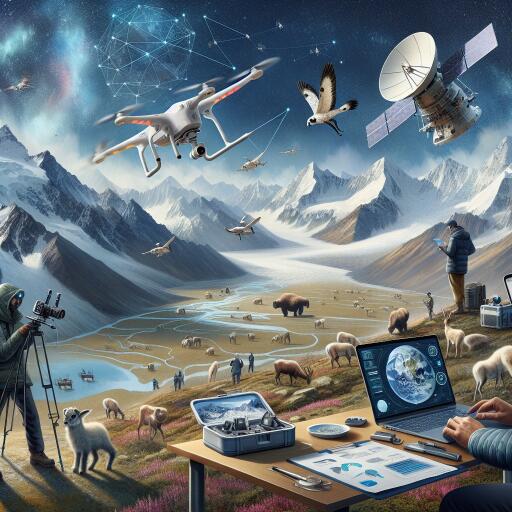
Tech Innovations Enhance Wildlife Conservation on “Roof of the World”
In the remote expanse of northwest China’s towering Qinghai-Xizang Plateau, where the air is thin and the landscape is an endless canvas of natural beauty, a revolution in wildlife conservation is taking place. At the forefront of this movement stands the symbol of resilience and hope: a statue of the Tibetan antelope, located within the Hoh Xil nature reserve in the Sanjiangyuan National Park, the largest area of uninhabited land in the country.
The reserve’s first protection station, named after Sonam Dargye, a revered wildlife guardian who lost his life to poachers in 1994, continues to inspire a new generation of conservationists. Among them is 24-year-old Tsering Lozang, the youngest ranger stationed here. Moved by Dargye’s legacy, Lozang and his peers are the guardians of this vast wilderness, patrolling it with a blend of passion and advanced technological aids, ensuring the protection of its diverse inhabitants.
On World Wildlife Day, the spotlight turns to these unsung heroes and the sophisticated technology that supports them in their mission to safeguard the natural treasures of this “roof of the world.” One such innovation is the launch of a 5G base station near Zonag Lake, known as the “delivery room” for the Tibetan antelope, a species under first-class state protection in China.
This technological advancement has transformed the landscape of conservation in Hoh Xil. Tsesogyal, a 28-year-old ranger, recalls times when connecting with the outside world was an arduous task, limited to expensive satellite phone calls. Today, the 5G network coverage allows rangers to share live updates and photos of wildlife, vastly improving communication and efficiency in monitoring the reserve’s diverse species.
In an effort to bolster ecological monitoring, a remote real-time observation system spanning 76 locations across Sanjiangyuan National Park was established in 2016. This “window of ecology” enables in-depth studies and data collection on wildlife migrations and helps in the conservation of rare species. The deployment of the 5G network at strategic points like Zonag Lake not only enhances the capacity for real-time monitoring but also facilitates remote veterinary care for injured animals, embodying the park’s commitment to intelligent ecological protection.
According to the Sanjiangyuan National Park administration, the future will see more 5G base stations across the reserve. These will be complemented by a combination of remote inspection, on-site patrols, and even helicopter surveillance, significantly strengthening efforts against poaching and ensuring comprehensive ecosystem monitoring.
Highlighting the vital role of technological innovation in wildlife research, Lian Xinming from the Northwest Institute of Plateau Biology emphasizes the importance of studying flagship species like the Tibetan antelope for preserving the plateau’s biodiversity. With the integration of AI technology in monitoring reproductive patterns among the antelopes, researchers anticipate a reduction in human intervention and increased accuracy in data, paving the way for more effective conservation strategies in this majestic land.
From the establishment of the first protection station to the deployment of cutting-edge technological solutions, Hoh Xil’s journey in wildlife conservation is a testament to the enduring spirit of guardians like Sonam Dargye. It serves as a powerful reminder of the pivotal role innovation plays in safeguarding our planet’s biodiversity for generations to come.





Leave a Reply